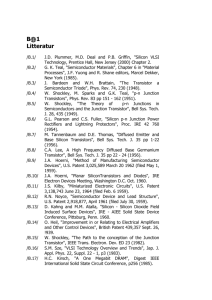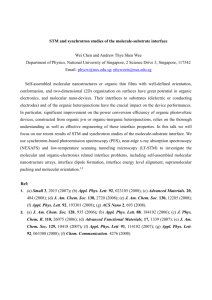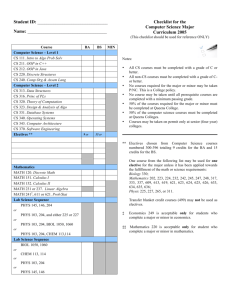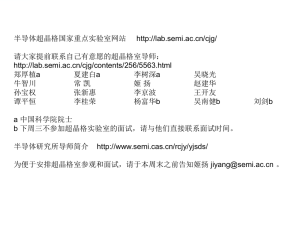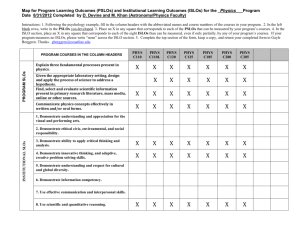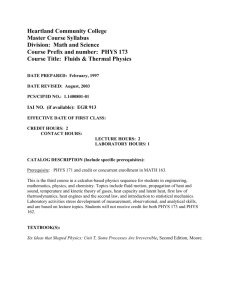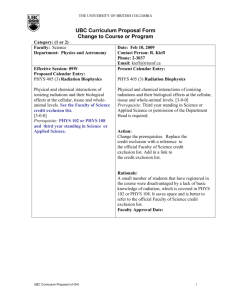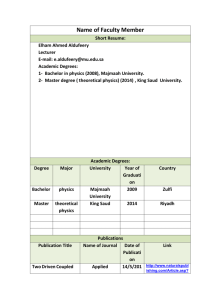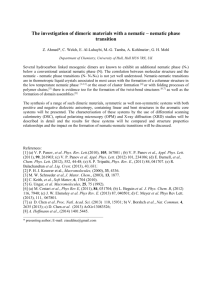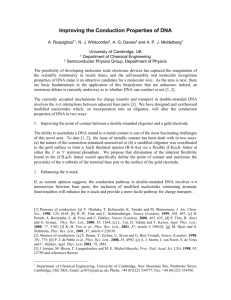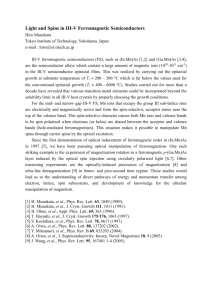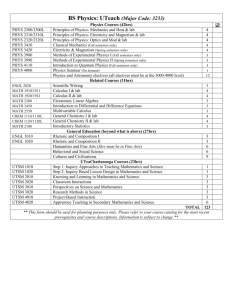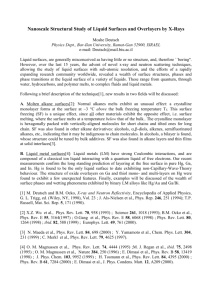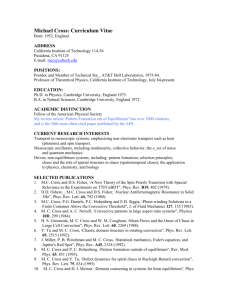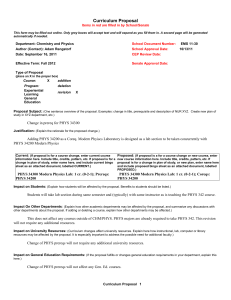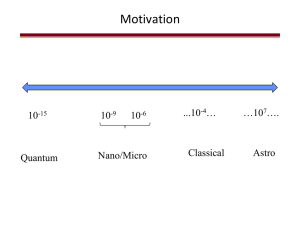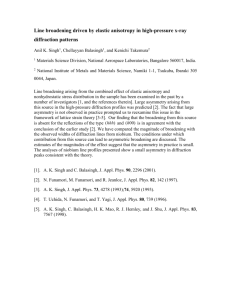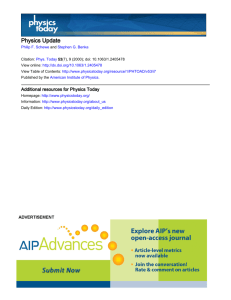Piotr Garstecki
advertisement
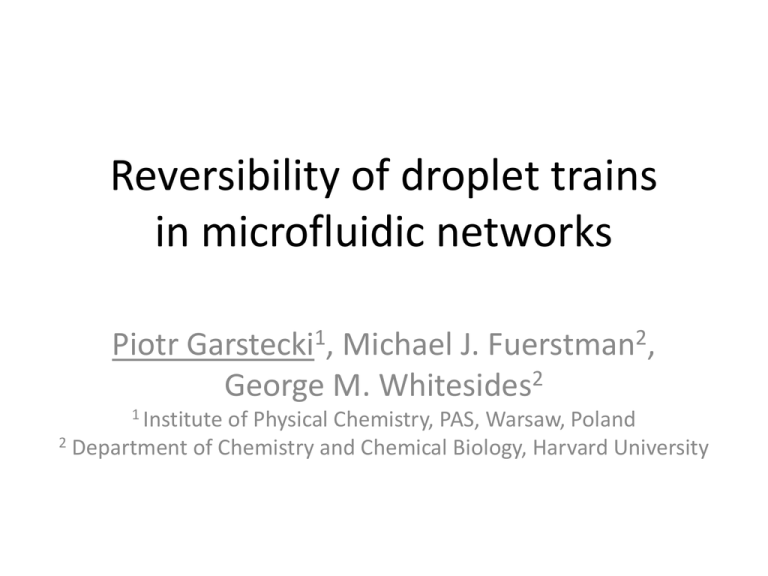
Reversibility of droplet trains in microfluidic networks Piotr Garstecki1, Michael J. Fuerstman2, George M. Whitesides2 1 Institute of Physical Chemistry, PAS, Warsaw, Poland 2 Department of Chemistry and Chemical Biology, Harvard University Kenis, Science (1999) the simplest network – a single loop amplification and feedback: • drop flows into the arm characterized by lower resistance (higher pressure gradient) • once the drop enters a channel it increases its resistance the simplest network – a single loop period-1 period-2 ffeed / fflow period-3 irregular Phys. Rev. E (2006) nonlinear dynamics embedded in a linear flow invariant under: x - x, (or, equivalently V - V, and p -p) period 1 period N ??? period 1 period N The “operation” of the system is stable against small differences in the incoming signal Science (2007) there is amplification and feedback, but: • the nonlinear events are isolated (very short) • the long-range interactions are instantaneous (information is transmitted much faster than the flow proceeds) • it is all embedded in a linear, dissipative flow formation of bubbles – a single nozzle water gas water height = 30 mm 1 mm Appl. Phys. Lett. 85, 2649 (2004) formation of bubbles – a single nozzle water gas water height = 30 mm Appl. Phys. Lett. 85, 2649 (2004) fraction of the area of the orifice occupied by gas 1 fraction 1 mm 0.8 0.6 0.4 0.2 0 0 5 10 15 20 time [ms] nitrogen (p=8 psi) / 2% Tween20 in water (Q=3 mL/h), orifice width/length/height: 60/150/30 mm. liquid gas liquid 50 mm end of the gas Inlet channel equilibrium shape for a given volume enclosed by the gas-liquid interface end of the orifice surface evolver • rate of collapse linear in the of inflow of the continuous phase • only the very last (and short) stage is driven by interfacial tension Phys. Rev. Lett. 94, 164501 (2005) coupled flow-focusing oscillators information (fast) final break-up takes ‘no’ time evolution (slow) + dissipative dynamics (low to mod Re) coupled flow-focusing oscillators period-29 Nature Phys. 1, 168 (2005) coupled flow-focusing oscillators Nature Phys. 1, 168 (2005) 160 kfps – – 6.25 ms The observed dynamics is (again) stable. Nature Phys. 1, 168 (2005) dynamics of flow through networks: • complicated (complex) it is possible to design complex, automated protocols • stable the protocols can be executed in practice

